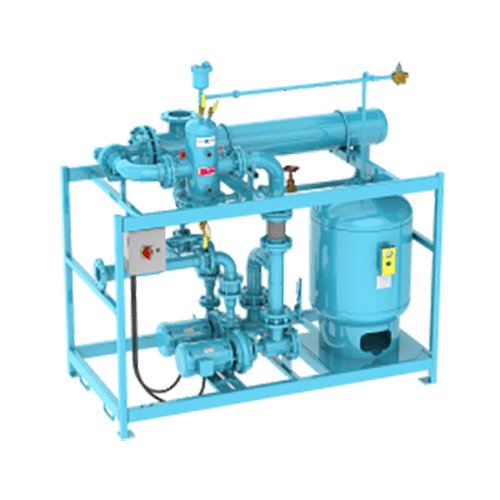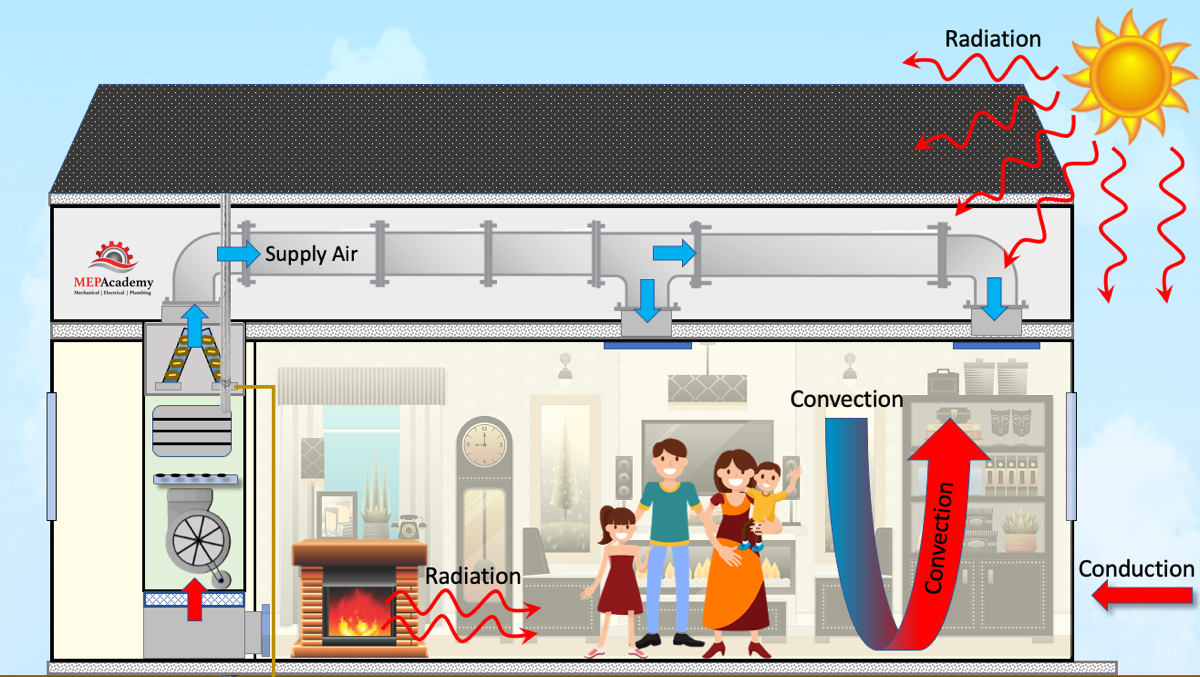Why Are DVS Heat Transfer Systems Ideal for Aerospace Thermal Solutions?
A Comprehensive Guide to Picking the Right Heat Transfer Equipments for Your Needs
Selecting the suitable Heat transfer system is crucial for functional efficiency. Different systems deal with different needs, affected by variables such as temperature variety and fluid type. Comprehending the principles behind Heat transfer, such as radiation, convection, and conduction, is essential. Furthermore, examining power resources and maintenance techniques can affect long-term efficiency. A closer evaluation of these factors to consider exposes exactly how to customize a system to certain requirements. What should one prioritize in this complex decision-making procedure?
Comprehending Heat Transfer: Key Ideas and Concepts
Heat transfer might seem like a simple idea, it incorporates an array of concepts that are fundamental for efficient system design - DVS Heat Transfer Systems. Recognizing these principles is necessary for designers and designers who intend to enhance thermal performance in numerous applications. Transmission, for example, includes the transfer of Heat via solid materials, while convection describes the motion of Heat within liquids. Radiation, an additional essential principle, defines exactly how Heat can be moved with electro-magnetic waves. Each of these devices plays a crucial duty in determining exactly how power moves within a system. By thoroughly realizing these concepts, specialists can make informed decisions, ensuring that Heat transfer systems run effectively and fulfill the particular needs of their applications
Types of Heat Transfer Equipments: An Overview
Understanding the concepts of Heat transfer prepares for discovering the various sorts of Heat transfer systems offered. Heat transfer systems can be classified primarily into 3 types: radiation, convection, and conduction. Transmission entails Heat transfer through solid materials, counting on direct call between fragments. Convection, on the other hand, happens in fluids (fluids and gases) where the activity of the liquid itself facilitates Heat transfer. Radiation includes the transfer of Heat through electromagnetic waves and does not need a medium, permitting it to occur in a vacuum cleaner. Each sort of system has distinct qualities and applications, making it necessary for individuals and organizations to carefully analyze their particular demands when picking the most suitable Heat transfer service.
Applications of Heat Transfer Solutions in Different Industries
Heat transfer systems play an essential function across various industries, influencing effectiveness and item top quality. In commercial manufacturing procedures, they assist in precise temperature control, while in food and beverage handling, they assure safety and security and preservation. Furthermore, a/c and environment control systems count greatly on effective Heat transfer to keep comfy environments.
Industrial Production Processes

Many commercial production procedures count heavily on reliable Heat transfer systems to maximize performance and enhance product top quality. In sectors such as metalworking, Heat exchangers play a vital role in preserving optimal temperature levels during welding, spreading, and forging. These systems guarantee uniform Heat distribution, which is crucial for attaining preferred material homes. In a similar way, in the chemical production sector, Heat transfer systems assist in precise temperature control during reactions, influencing yield and safety and security. In fabric production, reliable Heat management is important for coloring and ending up procedures, affecting shade consistency and textile high quality. By picking suitable Heat transfer innovations, makers can improve energy efficiency and reduce functional prices, ultimately leading to a much more sustainable and affordable manufacturing setting.
Food and Beverage Processing
Efficient Heat transfer systems are just as crucial in the food and beverage handling industry, where maintaining perfect temperature levels is important for food safety and security and top quality. These systems play a crucial function in processes such as cooking, sterilization, and pasteurization, guaranteeing that items are safe for intake and preserve their nutritional worth. Heat exchangers, for circumstances, effectively transfer Heat in between liquids, enhancing energy usage while lessening temperature variations. Furthermore, refrigeration systems are fundamental for prolonging and protecting perishable things life span. The selection of Heat transfer innovation straight influences functional efficiency and product honesty, making it necessary for food and drink producers to select the appropriate systems tailored to their certain processing needs. This careful selection ultimately adds to consumer complete satisfaction and food security.

Heating And Cooling and Climate Control
While numerous markets rely upon Heat transfer systems for effectiveness, HVAC (Heating, Ventilation, and A/c) plays an important duty in keeping interior environment control throughout numerous settings. These systems utilize Heat transfer concepts to manage air, moisture, and temperature level high quality, making sure comfort and security in property, commercial, and industrial environments. Appropriately made HVAC systems improve power effectiveness, reduce operational expenses, and decrease ecological influence. In commercial buildings, for example, effective climate control adds to employee efficiency and client satisfaction. In commercial applications, cooling and heating systems aid preserve optimal conditions for devices procedure and product conservation. Choosing the ideal Heat transfer system is important for conference certain climate control requirements and accomplishing overall system performance.
Reviewing Energy Sources for Heat Transfer Systems
In assessing power sources for Heat transfer systems, a comparison of renewable energy options and fossil fuel factors to consider is vital. Sustainable sources, such as solar and wind, deal lasting alternatives that can lower ecological influence. Conversely, nonrenewable fuel sources remain widespread because of their well established infrastructure and energy thickness, triggering a mindful assessment of both options.
Renewable Power Options

Fossil Gas Considerations
Evaluating fossil gas considerations is essential for the effectiveness and sustainability of Heat transfer systems. Nonrenewable fuel sources, such as all-natural gas, oil, and coal, are typical energy resources that give substantial Heat result, making them prominent selections for industrial and property applications. However, their environmental effect, including greenhouse gas discharges and resource depletion, raises concerns. When picking a heat transfer system, it is vital to examine the availability, expense, and regulative elements associated with these fuels. Additionally, the performance of nonrenewable fuel source systems need to be taken into consideration, as higher efficiency can reduce some ecological drawbacks. Eventually, a well balanced approach weighing efficiency and sustainability can guide decision-makers towards one of the most appropriate Heat transfer service for their certain needs.
Aspects to Consider When Choosing a Warm Transfer System
Picking an appropriate Heat transfer system needs mindful consideration of various elements that can considerably affect performance and performance. One important element is the operating temperature range, which determines the materials and design ideal for the application. Additionally, the kind of liquid made use of in the system-- whether gas or fluid-- impacts Heat transfer performance and compatibility. The system's size and ability need to align with the particular demands of the operation her comment is here to stay clear of why not try this out ineffectiveness. Energy source availability is likewise necessary, influencing operating expense and sustainability. Furthermore, the installation atmosphere, consisting of space restraints and availability for upkeep, plays a substantial role in system choice. Ultimately, regulatory conformity and safety requirements should be considered to assure the system meets all legal demands.
Maintenance and Performance Optimization for Heat Transfer Equipments
Keeping Heat transfer systems is important for making certain maximum efficiency and longevity. Routine upkeep activities, such as cleansing Heat exchangers and examining insulation, help stop performance losses because of fouling and thermal linking. Additionally, keeping track of system criteria, consisting of pressure and temperature level, permits early detection of abnormalities, lessening downtime and expensive repair work. Executing a preventative maintenance timetable can optimize performance and expand the lifespan of components. Updating to advanced control systems can improve functional efficiency by adjusting to varying conditions and loads. By prioritizing maintenance and performance optimization, drivers can attain lowered energy consumption, reduced operational prices, and boosted overall system reliability, ultimately causing better resource utilization and a much more sustainable procedure.
Future Trends in Heat Transfer Technologies
As industries progressively focus on sustainability and energy effectiveness, future trends in Heat transfer technologies are readied to undergo considerable makeovers. Innovations such as advanced products, consisting of carbon nanotubes and nanofluids, promise improved thermal conductivity and effectiveness. In addition, the assimilation of renewable resource sources right into Heat transfer systems is getting energy, promoting green solutions. Smart technologies, consisting of IoT sensing units, are expected to change monitoring and control, enabling real-time data evaluation for maximized efficiency. The growth of modular and compact systems will certainly help with easier installation and maintenance, providing to diverse applications. These developments suggest a shift in the direction of more sustainable, efficient, and versatile Heat transfer options, aligning with worldwide power goals and ecological requirements.
Regularly Asked Concerns
What Are the Ecological Impacts of Heat Transfer Systems?
The environmental influences of Heat transfer systems can consist of greenhouse gas emissions, energy intake, and potential thermal pollution. Additionally, incorrect disposal of products and ineffectiveness can add to source depletion and ecological community interruption.
How Do I Compute the Cost-Effectiveness of a Heat Transfer System?
To calculate the cost-effectiveness of a warm transfer system, one have to evaluate preliminary costs, functional expenditures, maintenance requirements, and energy effectiveness, contrasting these aspects versus the anticipated life-span and efficiency of More hints the system.
Can Heat Transfer Equipment Be Utilized in Residential Setups?
Heat transfer systems can certainly be made use of in residential settings. They offer reliable home heating and cooling down remedies, making homes more comfortable while potentially decreasing energy expenses. Their convenience enables different applications in household environments.
What Safety Laws Put On Heat Transfer Systems?
Safety regulations for Heat transfer systems usually include standards on setup, upkeep, and procedure. Compliance with local building ordinance, supplier requirements, and sector requirements is important to guarantee reliable and risk-free system performance in various applications.
How Do Various Products Affect Heat Transfer Performance?

Transmission, for instance, entails the transfer of Heat via solid materials, while convection refers to the movement of Heat within fluids. Comprehending the principles of Heat transfer lays the groundwork for exploring the various types of Heat transfer systems available. Heat exchangers, for circumstances, successfully move Heat in between fluids, optimizing energy usage while minimizing temperature variations. In reviewing power sources for Heat transfer systems, a comparison of renewable power choices and fossil gas considerations is crucial. Steels, such as copper and light weight aluminum, conduct Heat efficiently, whereas insulators like rubber and glass reduce down Heat circulation.